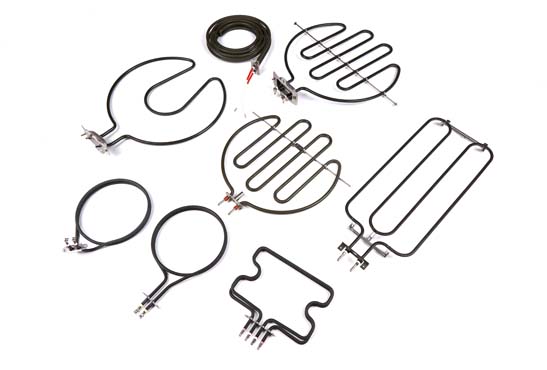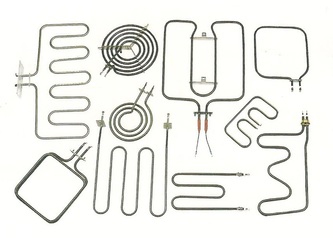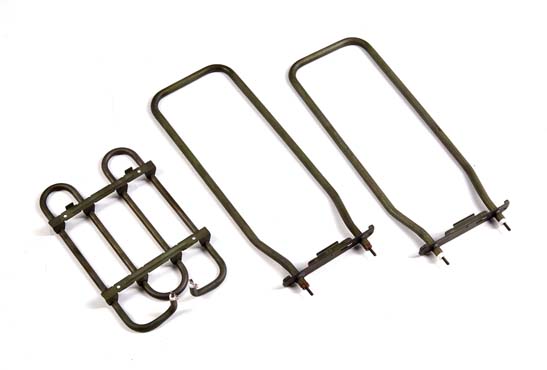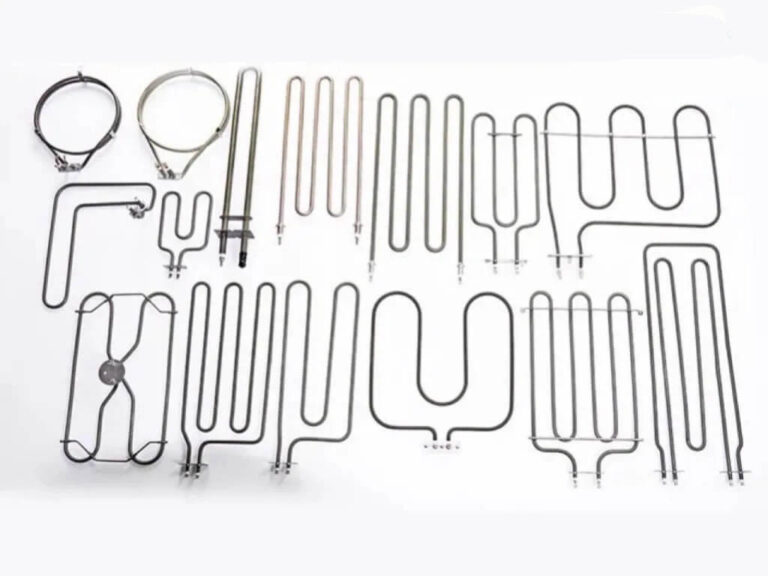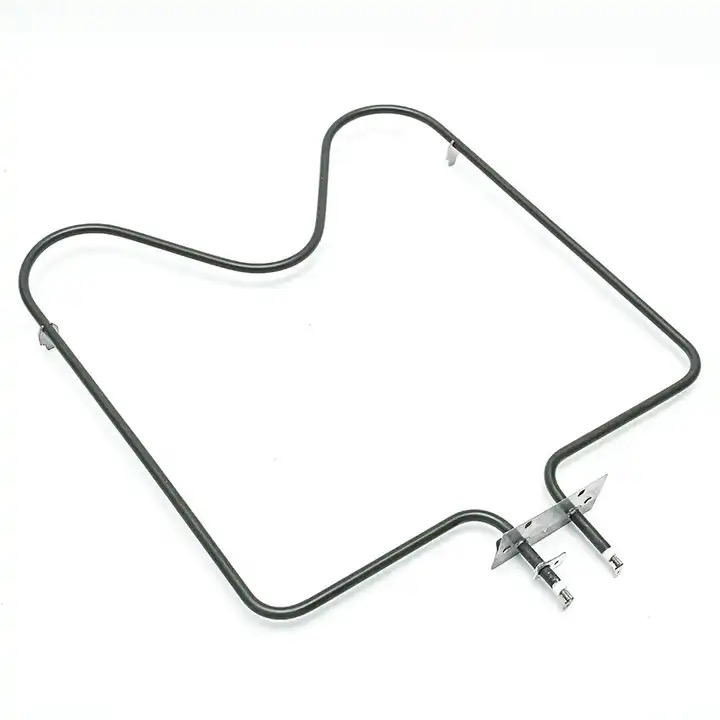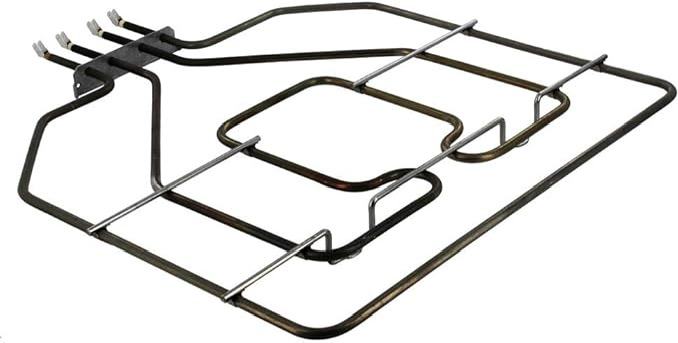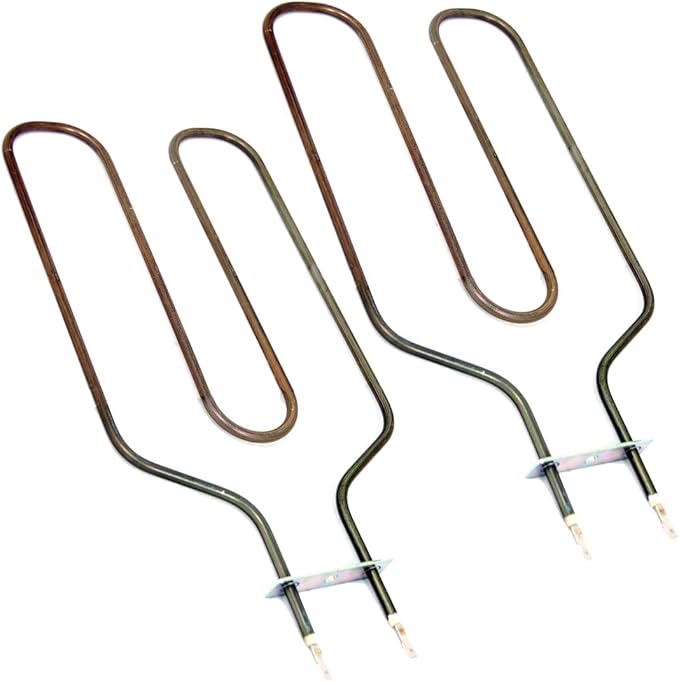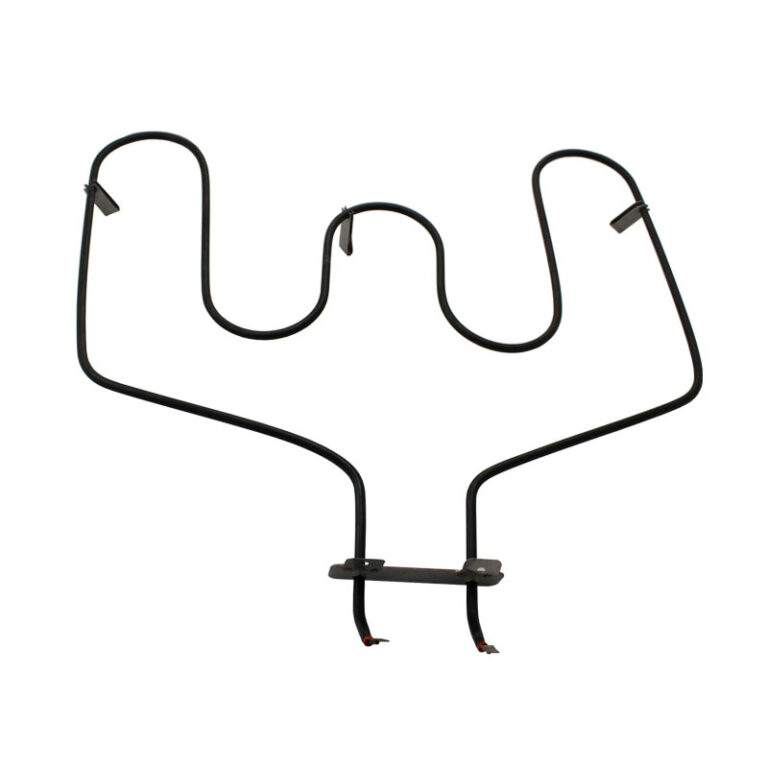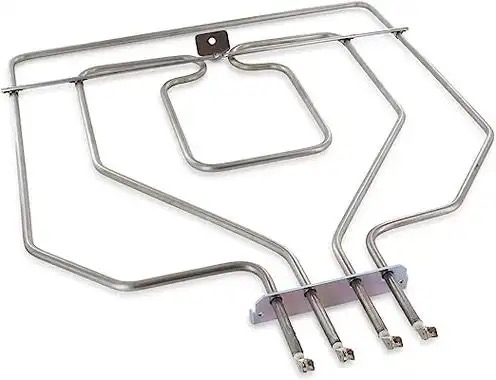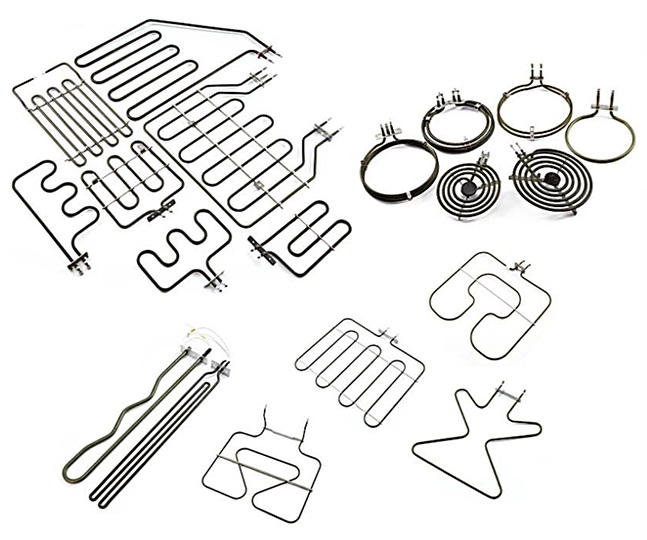Oven Heating Elements
Customizable/OEM
- Home
- »
- Oven Heating Elements
Product Catalog

Oven Heating Elements
ELEKHEAT provides high-quality oven heating elements designed to deliver precise and consistent heat for various cooking and baking applications, ensuring top-notch performance and reliability.
Our oven heating elements are crafted with durable materials such as stainless steel, Incoloy, and high-grade copper to withstand high temperatures and provide even heat distribution. Customizable in size, shape, and wattage, these heating elements are suitable for use in residential, commercial, and industrial ovens.
Oven Heating Elements Applications
1.Residential Ovens
- Electric ovens for home cooking
- Range ovens and wall ovens
- Toaster ovens and countertop ovens
2.Food and Beverage Processing
- Cooking and roasting machines in food production lines
- Snack food production ovens
- Drying ovens for food and spices
- Pizza ovens and fast food restaurant ovens
3.Cooking and Baking Equipment
- Grills and broilers
- Rotisserie ovens
- Pizza baking ovens
- Toasting ovens
4.Thermal and High-Temperature Equipment
- Laboratory ovens for sample drying and sterilization
- Heat treatment ovens in manufacturing
- Powder coating ovens for industrial applications
5.Commercial and Industrial Ovens
- Bakery ovens
- Convection ovens
- Industrial cooking and baking equipment
- Roasting and broiling equipment
- Conveyor ovens for mass production

Oven Heating Elements – General Specifications
| Specification | Details |
|---|---|
| Voltage Range | 110V – 480V AC (customizable) |
| Power Rating | 500W – 10,000W |
| Resistance Wire | Nickel-Chromium (NiCr) alloy |
| Sheath Material | Stainless Steel, Incoloy 800/840, Copper |
| Core Insulation | High-purity Magnesium Oxide (MgO) |
| Diameter Options | Ø6.5mm – Ø12mm (customizable) |
| Length Range | 100mm – 2000mm |
| Bending Formations | Straight, U, M, W-shaped, custom |
| Mounting Options | Flange, threaded stud, bracket, clip |
| Operating Temp. | Up to 800°C |
| Lifespan | 10,000+ hours |
| Certifications | CE, UL, RoHS, ISO 9001 |
| Customization | Wattage, voltage, shape, coating |
Features of Oven Heating Elements
Durability: Built to withstand high temperatures and frequent use in ovens, ensuring long service life.
Even Heat Distribution: Designed for uniform heating, preventing hot spots and providing consistent cooking results.
Customizable Designs: Available in various sizes, shapes, and wattages to suit specific oven designs and cooking requirements.
Energy Efficient: Engineered to optimize energy consumption while delivering optimal heat performance.
Our Customization Options
Contact ELEKHEAT today by dialing 008618914757574 or use our contact form ,We are happy to answer any questions. Elekheat is your best partner for heating element solutions!
Have a Question?
At ELEKHEAT, we’re here to provide the answers you need. Whether you’re looking for product information, technical specifications, or need assistance with maintenance, our team of experts is ready to help. Don’t hesitate to reach out—we’re committed to ensuring you get the support you need for the best heating solutions.
- Selection Guide
- Installation Guide
- Resource Center
1. Determine the Heating Requirements
a. Power Rating (Wattage)
- The wattage requirement depends on the oven size, heating load, and application.
- Higher wattage elements heat faster but consume more energy.
- Common wattage ranges: 500W – 10,000W (customizable based on application).
Formula for Power Calculation:
P=V×IP = V \times IP=V×I
Where P = Power (W), V = Voltage (V), I = Current (A).
b. Voltage and Phase Configuration
- Common voltage options: 110V, 230V, 240V, 400V, 480V (customized options available).
- Phase configuration:
- Single-phase: Used in residential and small commercial ovens.
- Three-phase: Used in industrial ovens requiring higher power output and efficiency.
2. Select the Appropriate Heating Element Type
a. Tubular Heating Elements
- Best for: Commercial ovens, conveyor ovens, industrial baking equipment.
- Features:
- Uniform heat distribution with durable stainless steel or Incoloy sheathing.
- Customizable bending configurations: U-shaped, M-shaped, W-shaped, straight.
- Suitable for convection ovens and radiant heating systems.
b. Finned Tubular Heating Elements
- Best for: Ovens requiring high heat transfer efficiency.
- Features:
- Metal fins increase heat dissipation and air circulation efficiency.
- Ideal for forced-air convection ovens.
c. Open Coil Heating Elements
- Best for: Toaster ovens, rapid-heating applications.
- Features:
- Exposed resistance wire provides fast heating response.
- Less durable than enclosed tubular elements.
d. Infrared Quartz Heating Elements
- Best for: High-intensity radiant heating ovens (e.g., pizza ovens, conveyor ovens).
- Features:
- Rapid heat-up and high thermal efficiency.
- Emits infrared radiation for direct heating.
3. Consider the Sheath Material Based on Operating Environment
The sheath material affects the thermal conductivity, corrosion resistance, and durability of the heating element.
| Sheath Material | Recommended Applications | Temperature Range | Corrosion Resistance |
|---|---|---|---|
| Stainless Steel (304, 316, 321, 430) | General-purpose ovens, food processing | Up to 800°C | High |
| Incoloy 800 / 840 | High-temperature industrial ovens | Up to 900°C | Excellent |
| Copper | Low-temperature heating | Up to 400°C | Moderate |
4. Determine the Mounting and Connection Type
Proper mounting ensures safe operation, heat efficiency, and ease of replacement.
a. Mounting Options
- Flange-mounted: Used in industrial ovens for secure installation.
- Bracket-mounted: Common in convection ovens for supporting tubular elements.
- Stud or threaded connections: Ensures tight electrical contact.
b. Terminal and Connection Types
- Screw terminals – Simple installation, commonly used in commercial ovens.
- Leads with ceramic connectors – High-temperature resistance, used in industrial applications.
- Quick-connect terminals – Designed for easy element replacement.
5. Heat Distribution and Thermal Efficiency
- Uniform heating: Reduces temperature fluctuations, ensuring consistent cooking results.
- Response time: Select materials with high thermal conductivity for faster heat-up.
- Energy efficiency: Proper wattage selection minimizes excessive power consumption.
6. Environmental and Safety Considerations
- Food safety compliance: For food-related applications, choose FDA-approved materials.
- Corrosion resistance: High-humidity ovens (e.g., bakery steam ovens) require Incoloy or stainless steel elements.
- Safety features: Consider overheat protection, thermal fuses, and insulation resistance to prevent failures.
1. Safety Precautions
- Power Off: Ensure the oven is completely disconnected from the power supply to prevent electrical hazards. Use a voltage tester to confirm no power is present.
- Protective Equipment: Always wear insulated gloves and safety goggles to protect against electrical shock and debris during installation.
- Ventilation: Ensure proper ventilation in the work area, especially in high-temperature environments.
2. Tools and Materials Required
- Insulated Gloves
- Screwdrivers (flathead and Phillips)
- Wrenches (for tightening fasteners)
- Multimeter (for testing continuity and electrical connections)
- Voltage Tester (for checking the power supply)
- High-Temperature Sealant (if required)
- Replacement Heating Element
- Screws, Nuts, and Mounting Brackets (if applicable)
3. Removing the Old Heating Element
- Turn Off the Power: Disconnect the oven from the electrical source, ensuring no live current is present.
- Access the Heating Element: Open the oven door and locate the element. This may be mounted at the top, bottom, or rear of the oven.
- Remove Mounting Fasteners: Use a screwdriver to remove any screws or nuts securing the heating element in place.
- Disconnect the Wires: Carefully disconnect the electrical terminals from the old element, ensuring you remember the wire configuration for reattachment.
- Remove the Element: Gently remove the element from its housing.
4. Installing the New Heating Element
- Position the New Element: Insert the new heating element into its designated position, ensuring it fits securely.
- Reconnect the Wires: Attach the electrical terminals to the new heating element. Ensure proper polarity and tight connections to avoid overheating or electrical failure.
- Secure the Element: Reattach the element with screws or brackets. Ensure the element is firmly mounted to prevent vibration during operation.
- Seal if Necessary: Apply a high-temperature sealant around the mounting area, if specified by the oven design, to prevent air leaks and enhance efficiency.
5. Finalizing the Installation
- Check Connections: Ensure all electrical connections are tight and properly insulated. Double-check that there are no exposed wires or loose terminals.
- Test for Continuity: Use a multimeter to test the new element for electrical continuity. If there is no continuity, the element may be defective.
- Power On: Reconnect the oven to the power supply and turn it on. Observe the heating element to ensure it heats up correctly without any irregularities (e.g., overheating or arcing).
- Heat Distribution Check: Verify that the element heats uniformly, with no hot spots or uneven heating patterns.
6. Troubleshooting and Testing
- Element Not Heating: Ensure the correct voltage is supplied to the oven. Test the thermostat or control board for malfunction.
- Improper Heating: Check for poor contact connections, insufficient current supply, or improper element mounting.
- No Continuity: Use a multimeter to test the element; a broken element will show no continuity and must be replaced.
7. Maintenance Tips
- Regular Inspection: Periodically check the wires and terminals for signs of wear or corrosion, which could affect the heating element's performance.
- Cleaning: Clean the heating element to prevent grease or food buildup, which can reduce heat efficiency.
- Monitor Performance: If the oven begins to heat unevenly or takes longer than usual to reach the set temperature, it may be a sign of a failing element.
Key Technical Considerations:
- Sheath Material: Choose the appropriate material (e.g., stainless steel, Incoloy) based on temperature, corrosion resistance, and application.
- Wattage and Voltage: Ensure the wattage (500W – 10,000W) and voltage match the oven’s specifications to ensure optimal performance.
- Thermal Resistance: The heating element should be able to handle up to 800°C depending on its sheath material, ensuring durability and longevity.
- Connection Types: Use nickel-plated terminals or ceramic connectors to avoid degradation under high temperatures and ensure proper electrical flow.
📩 Need professional assistance? Contact ELEKHEAT for expert installation services and customized oven heating solutions!
Welcome to Elekheat Resource Center, your one-stop destination for comprehensive technical documentation and industry insights. Designed to support professionals across various sectors, our resource hub provides access to valuable information.


